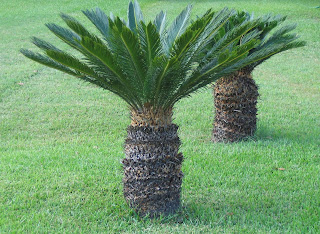Use the sago palm (Cycas revoluta) for landscaping, you should use a 1 stone or 3 pieces paste different level. Which use of stone, it should be a piece or 3 pieces. It will not be used for 2 pieces. You can observe from the gardens generally. And what is indispensable, it is planted grass.
You should have knowledge about the sago palm (Cycas revoluta) before landscaping.
Some say that the landscaping is not difficult. Just planting trees, this is landscaping, which it is not wrong to say that, but was not all. It was not all, because landscaping is about more than planting trees. It requires knowledge, rather than planting trees such as each tree was like the sun is not the same. This tree may prefer to stay in the shade. But if we take it in the sun, it will die.Or tall trees, we took to the front gardens, which first to buy it, it's so small, so paste it to front, but over the next two months, it steeply over the tree at the back. You have to move it again. This makes you lose time to care for other plants.















